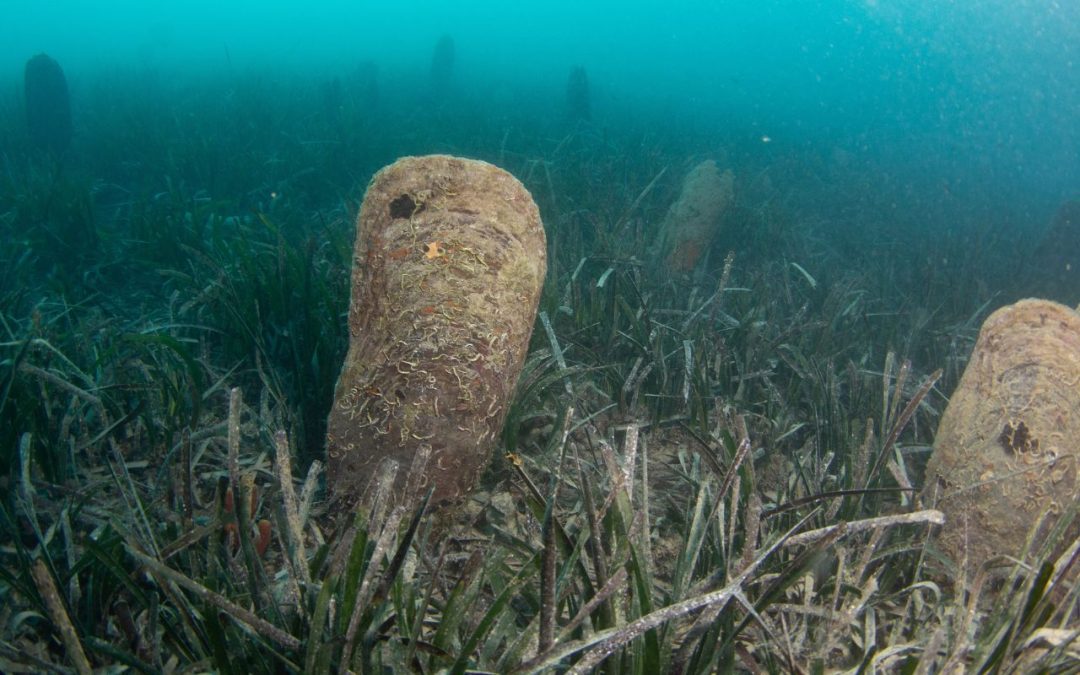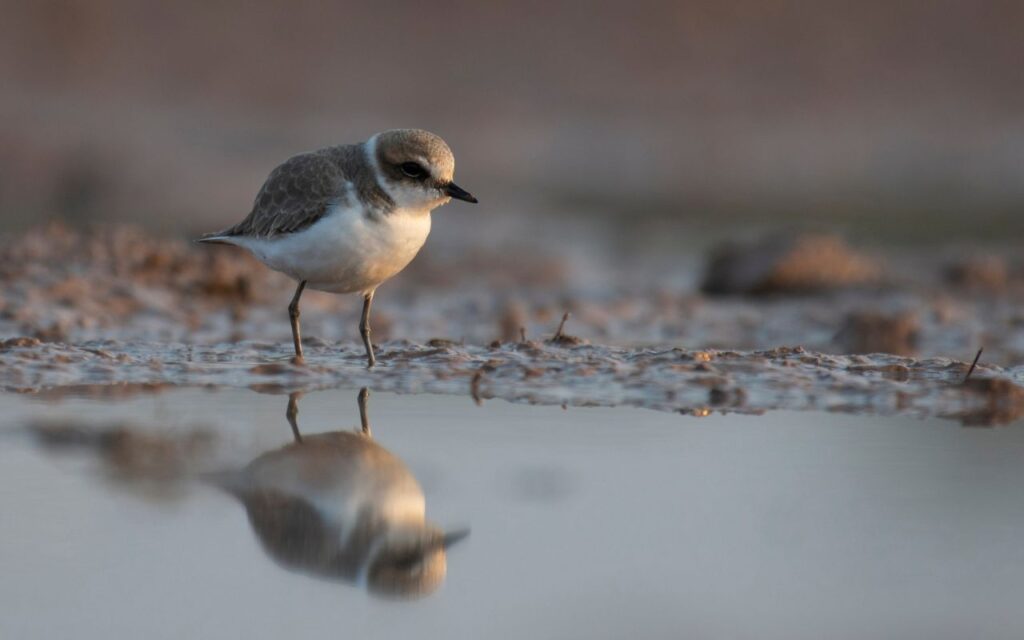Written by: Marina Duplančić (volunteer in the service-learning program at Sunce), Bruna Tomić
Our coasts, beaches, and seabed are home to a rich and diverse world. However, increasing tourism pressure and visitors’ unintentional behavior negatively impact the protection of marine species and habitats.
Submerged and partially submerged caves, muddy and sandy seabeds that are not covered by the sea at low tide, and Posidonia meadows are among the most vulnerable habitats in our part of the Mediterranean. Not only the habitats themselves, but also their animal inhabitants—such as the Ferruginous duck, the Kentish plover, and the Loggerhead turtle—must be treated with respect and care.
That’s why this summer, as part of the ASPEH – Adriatic SPEcies and Habitats of coastal areas project, we created a guide on how to behave responsibly in these three habitats, and what to do if you encounter endangered species. This guide is not a list of prohibitions—it’s an invitation to help preserve the Adriatic treasures.
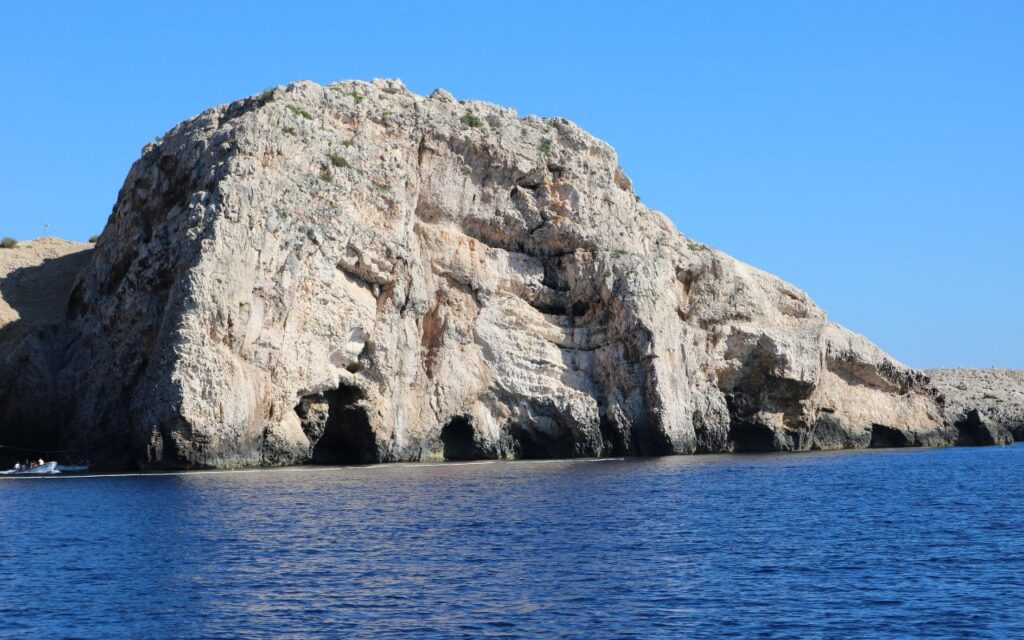
Submerged and partially submerged caves
Sea caves are fascinating natural formations shaped over tens of thousands of years by water, waves, and stone. But they’re not just geological wonders, they’re also vibrant habitats. These caves host a variety of species, from sponges and mollusks to crabs, fish, and even bats. They offer shelter, breeding grounds, and feeding areas for many species, connecting different coastal ecosystems and contributing to genetic diversity and population resilience.
With over 3,000 such caves in the Mediterranean and their extreme sensitivity to environmental changes and human presence, their protection is vital. What nature has crafted over millennia can be destroyed by careless human behavior in a matter of minutes. Entering caves without proper knowledge, equipment, or permission can permanently disrupt their delicate balance.
Responsible behavior guide
- Only visit caves open to the public and always with a professional guide.
- Do not touch the cave walls—they may host microscopic organisms that depend on untouched surfaces.
- Do not take anything from the cave—not even pebbles or shells.
- Do not leave anything behind.
- Avoid making noise or using artificial lights, as many cave-dwelling animals, especially those adapted to darkness, are extremely sensitive to changes in their environment.
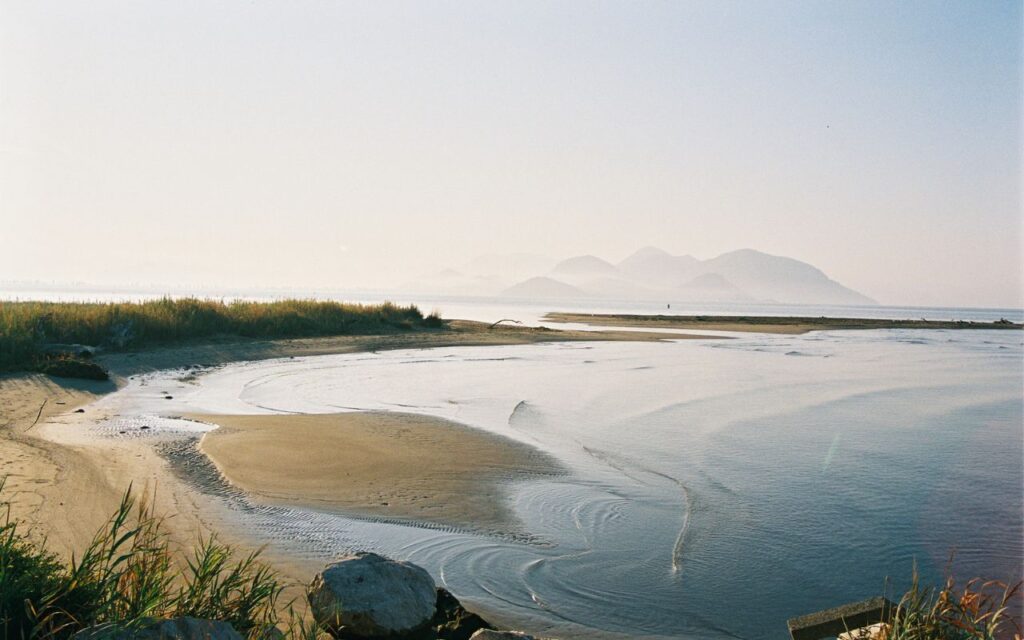
Muddy and sandy seabeds that are not covered by the sea at low tide
The Adriatic Sea, bordered by the coasts of Italy, Croatia, Slovenia, Montenegro, and Albania, hosts thousands of beaches. Among them are muddy and sandy seabeds that are not covered by the sea at low tide. Though they may seem unremarkable at first glance, these habitats are crucial for coastal biodiversity and ecosystem balance. They provide breeding and feeding grounds for various birds, fish, crabs, and mollusks. Moreover, they reduce wave energy, protect shorelines from erosion, and store carbon, playing a role in fighting climate change. Their natural filtering ability further emphasizes the need for protection.
Unfortunately, increasing tourism, pollution, and climate change are threatening these areas. Their disappearance would mean the loss of many ecosystem services. So, when exploring these environments, do your best not to disturb the wildlife.
Responsible behavior guide
- Do not dig into the sediment.
- Do not collect shells or living creatures because every part of the ecosystem has a role in maintaining balance.
- Do not leave trash behind.
- Observe without touching.
- Stay away from nesting animals in the area
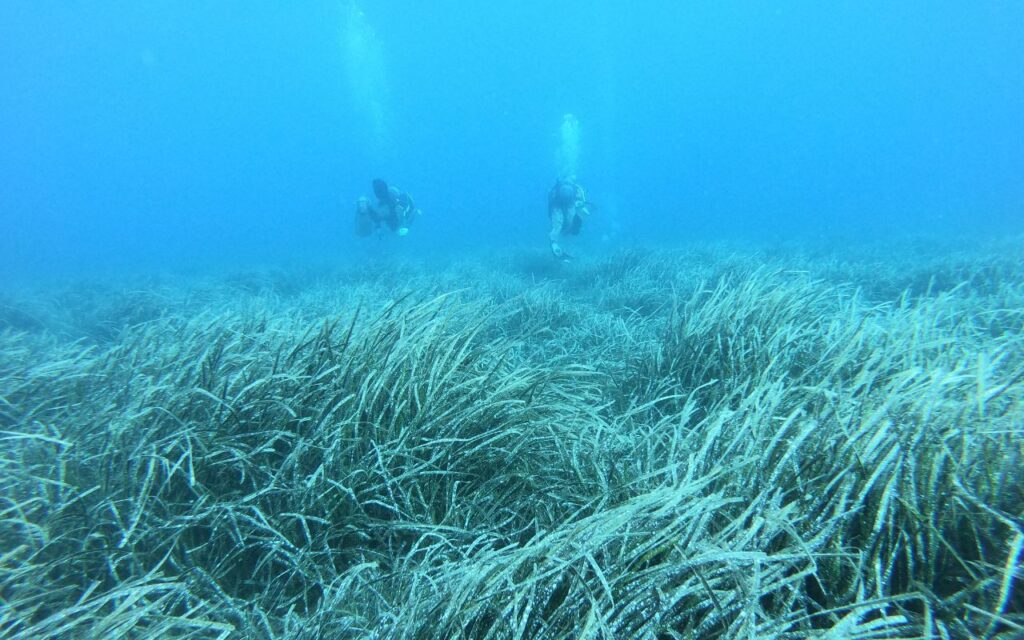
Posidonia meadows
The Adriatic hides a valuable yet often invisible treasure: Posidonia oceanica meadows. This seagrass is endemic to the Mediterranean and one of the most important marine habitats—home to over 20% of known Mediterranean marine species. It produces oxygen, stores carbon dioxide, protects the coastline from erosion, and hosts hundreds of marine species. Producing up to 14 liters of oxygen per square meter per day, it’s often called the “lungs of the Mediterranean.” It grows extremely slowly—only 1 cm per year—so any anchoring that pulls out its rhizomes has a long-lasting impact.
Posidonia meadows are considered a priority habitat under the Natura 2000 network and are legally protected in Croatia due to their ecological importance and vulnerability. Climate change, pollution, invasive species, and harmful fishing practices further threaten this precious habitat.
Responsible behavior guide
- Never drop anchor in Posidonia meadows—always anchor on sandy areas.
- Do not use bottom trawl nets.
- Do not remove dried Posidonia from the beach because it plays a role in coastal nourishment and protection.
- Avoid discharging wastewater into the sea.
Kentish plover
The Kentish plover (Charadrius alexandrinus) is a small shorebird that inhabits coastal habitats across Europe, including the Adriatic coast. Although classified by the International Union for Conservation of Nature (IUCN) as Least Concern, its European populations are in decline, with numbers in Italy drastically reduced. Its muted coloring helps it blend into its surroundings, offering protection but also making it nearly invisible to beachgoers. It nests directly on the ground, often just a few meters from sunbathers, making it highly sensitive to disturbance—even brief human presence can cause it to abandon its nest.
As a bioindicator species, the presence of the Kentish plover reflects the health of its habitat, making its protection critical to the entire coastal ecosystem. Did you know that in Spain, the presence of this bird is used as a sign of sustainable beach management?
Responsible behavior guide
- Do not feed or alter their natural feeding behavior.
- Do not touch, chase, or disturb them.
- Do not disrupt their natural surroundings.
- Stay on marked paths to avoid stepping on nests—eggs are often nearly invisible.
- Be cautious with pets, especially dogs.
- Do not leave trash behind because it can attract predators that threaten eggs and birds.
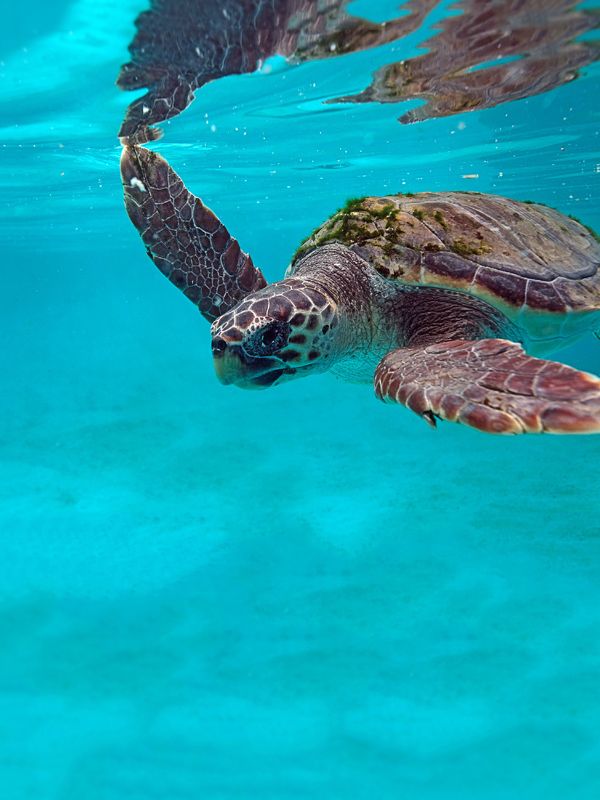
Loggerhead turtle
The Loggerhead turtle (Caretta caretta) is the most common sea turtle species in the Adriatic, but also one of the most endangered. As the only marine reptiles in the region, turtles play a key role in maintaining the health of coral reefs and Posidonia meadows. Yet only about 1% of hatchlings survive to sexual maturity. Major threats include bycatch, boat strikes, pollution, habitat loss, and climate change—which affects the sex of hatchlings (warmer sand “produces” females, cooler “produces” males).
So, if you see one, keep your distance and do not disturb it. Sadly, loggerheads are increasingly harmed by human negligence. Collisions with boats and entanglement in fishing gear are claiming their lives. Let’s be responsible—slow down when needed, report injured individuals, and support sustainable fishing. Their survival depends on our actions.
Responsible behavior guide
- Do not feed or interfere with their natural feeding behavior.
- Do not touch, chase, or disturb them.
- Do not take close-up photos.
- Keep a distance of at least 3 meters.
- Avoid making noise.
- If the turtle is injured, contact the nearest veterinary service or marine turtle experts—never try to help on your own. According to the Protocol for reporting and responding to dead, sick, or injured strictly protected marine animals in Croatia, call 112, the civil protection office, which will assist further.
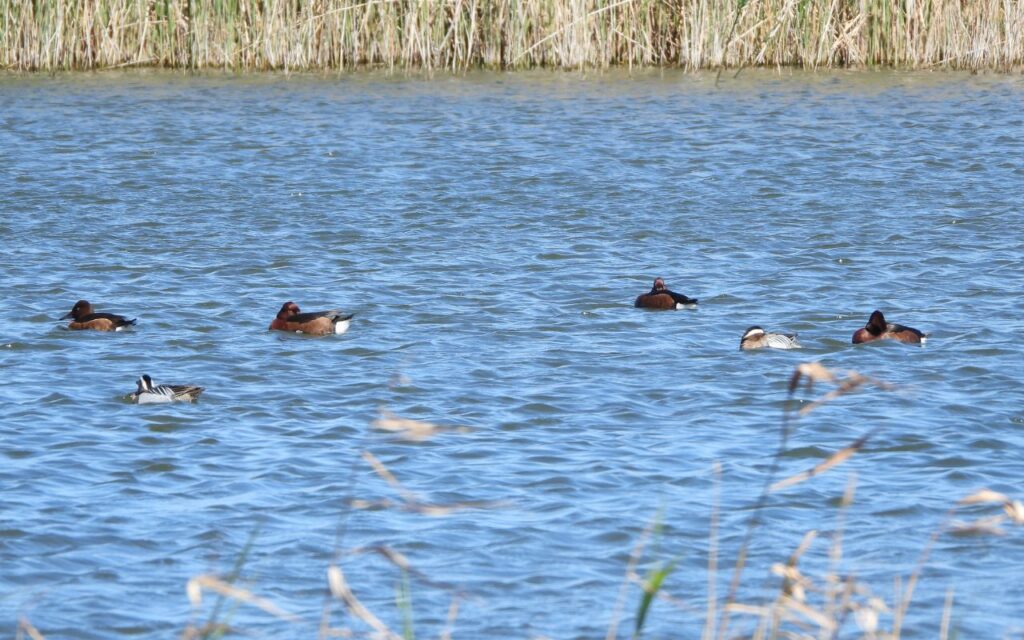
Ferruginous duck
The Ferruginous duck (Aythya nyroca) is one of the rarest duck species in Europe, occasionally or permanently found in the Adriatic’s coastal areas. This species prefers calm, shallow water habitats such as lagoons, wetlands, and still freshwater zones near the sea. Though small (up to 55 cm in length), it plays a big role in the ecosystem by dispersing plants and small aquatic animals across various water bodies, boosting biodiversity.
Due to habitat loss and fragmentation, the number of ferruginous ducks is declining. They’re sensitive to noise, pollution, invasive species, hunting, and human presence—especially during nesting season. Their presence in a region signals a preserved, peaceful, and biodiverse environment.
Responsible behavior guide
- Keep your distance and do not approach them.
- Do not touch, chase, or harm them.
- Do not disturb their natural habitat.
- Be cautious with pets, especially dogs around them.
- Do not feed or interfere with their natural feeding behavior.
- Do not use drones or devices that may disturb birds.
Every species counts, every habitat matters
You may wonder whether your caution can truly make a difference. The truth is—it can! Every shell left undisturbed, every bird not startled, every bit of trash you take with you, it all contribute to a bigger picture, one where tourism and nature exist side by side, not in opposition.
The nature of the Adriatic doesn’t ask for grand sacrifices. It asks for silence, respect, and presence without destruction. So this summer, let your enjoyment of nature be a responsible one—because every species counts, every habitat matters!
We invite you to spread awareness of responsible behavior at and near the sea by sharing posts from the official Facebook page of the project! You can find all the information from this article there. For more details about the project and other related activities, visit the official project website.

